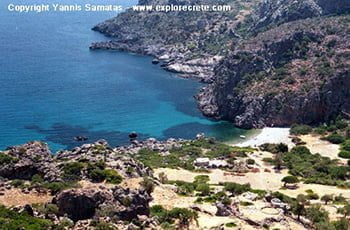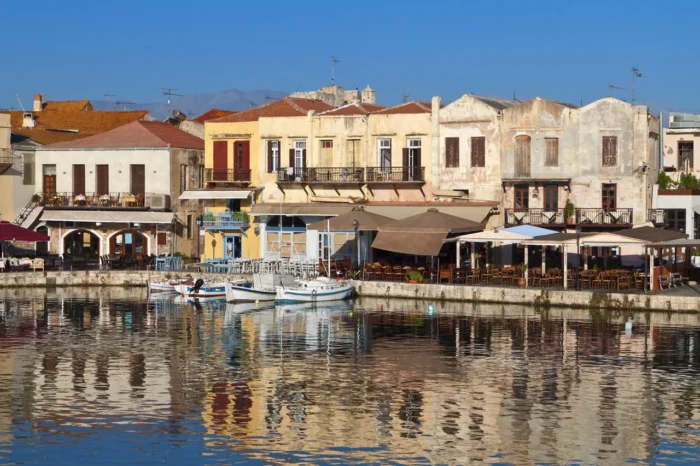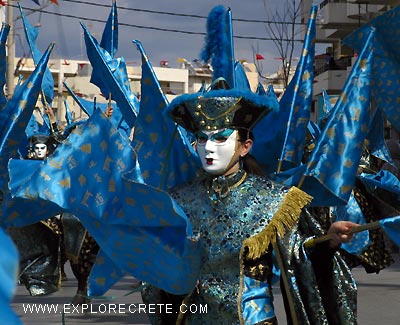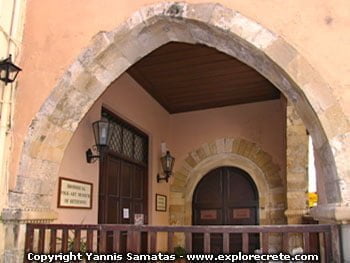Fortezza in Rethymnon
Fortezza, the Venetian fortress in Rethymnon
The Fortezza (in this case pronounced “Fortedza” rather than “Fortetsa”) is the Venetian fortress of Rethymnon, almost in the centre of the old town. The giant Fortezza, with its hidden centuries of history, is visible from every corner of the town and offers panoramic views of Rethymnon and the coast to the west.
Table of Contents
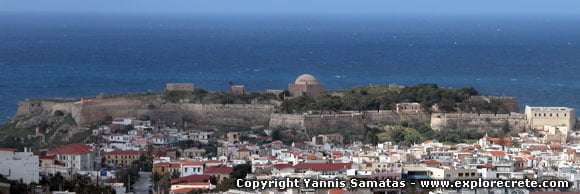
History of the Fortezza
According to one theory, the hill on which the Fortezza is built was once, in a time lost in the mists of history, an island joined to Crete by a narrow strip of land. Over the centuries the channel silted up and the hill became part of the Cretan mainland.
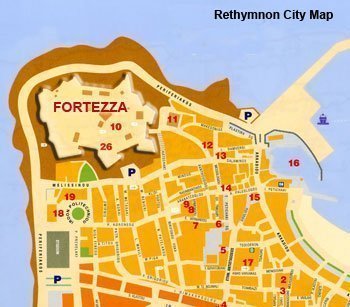
The hill of Paleokastro (“Old Castle”) was probably the site of the acropolis of ancient Rithymna with its Temple of Apollo and Sanctuary of Artemis, although this has not been proven to date. In the 3rd century AD, in the Roman period, there is a reference to a temple of Artemis Roccaea on the hill. In those times Rethymnon was an independent city with its own coinage but not a particularly powerful one.
During the Second Byzantine Period (10th-13th c. AD), a small walled settlement was established east of Paleokastro hill, the Castrum Rethemi or Castel Vecchio or Antico Castello (“Old Castle”) as the Venetians later called it.
In the early 13th century the Genoese pirate Enrico Pescatore, an enemy of the Venetians who claimed Crete for himself, seems to have repaired the Byzantine fortifications surrounding the buildings of the small town near the harbour. The Castrum Rethemi was preserved after the Venetian occupation of the island in the 13th century, but unfortunately nothing remains today of the fortifications with their square towers and two gates.
The Venetians, as a marine power, intended to use Rethymnon as a shelter and intermediate base between Heraklion and Chania by building a harbour, even a small one. This led to Rethymnon becoming a city whose expansion necessitated the construction of new fortifications.
The events that followed in Crete from the first half of the 16th century onwards – the Turkish threat and the development of artillery after the invention and widespread use of gunpowder – led Venice to embark on the organisation of Crete’s military defences and demonstrated the need for the Fortezza in Rethymnon. It was decided to build walls according to the plans of the Veronese architect Michele Sanmicheli. The foundation stone was laid on 8 April 1540 but the walls were only eventually completed just before 1570.
The walls of Rethymnon were only token defences, which were unfortunately not strong enough to withstand the attack of the corsair Ulu Ali Reis. He was an Italian who had been captured by Barbarossa’s men and later become a Muslim, who rose to become Pasha of Algiers and fought many battles against the Christians in the Mediterranean. In 1571 Ulu Ali attacked Rethymnon with 40 galleys. The Venetians had abandoned the city, leaving behind only a skeleton guard of 100 men who were unable to resist for long. Ulu Ali easily scaled the defences and razed the city to the ground.
This destruction demonstrated the need for more effective fortifications. The local authorities, both Venetian and Cretan, the people of Rethymnon and the Venetian Senate, decided to build a fortress which could shelter all the houses in Rethymnon. The hill of Paleokastro was chosen as the most suitable site and work began on the Fortezza, one of the largest and most complete fortification works built in Crete under Venetian rule.
The Fortezza was built according to the bastion fortification system, with bastions joined by straight sections of thick curtain wall, inclined outwards to make enemy missiles bounce off without damaging the fortress. The original plans of the military engineer Sforza Pallavicini were used, with some necessary modifications, improvements and extensions to complete the fortress.
The foundation stone of the Fortezza was laid by the Venetian Rector (as the Governor was called) Alvise Lando on 13 September 1573. Work on the walls and the public buildings within them was completed by 1580.
During the years it was being built, 107,142 Cretans took part in compulsory labour and 40,205 pack animals were requisitioned to work on the Fortezza, under the direction of master builder Giannis Skordilis.
The Role of the Fortezza in Venetian Rethymnon
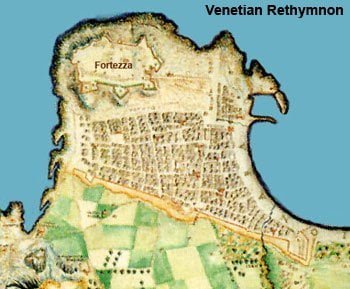
As soon as the Fortezza was completed it became obvious that there was hardly any space left for private homes, so the fortress was declared a public area, only to be used as a last resort by the inhabitants in the event of a siege.
It is reported that, even though the Rethymniots themselves had requested the construction of the Fortezza, once it was finished they refused to abandon the razed town with its weak walls and gain the security of the Fortezza.
One explanation for this strange refusal is that the inhabitants of Rethymnon had already started to rebuild their houses in 1571 using material from the old walls. When the Fortezza was eventually completed nine years later, they were reluctant to start all over again.
It seems, however, that this is only part of the truth; contrary to their assertions, the Venetians had not built the fortress for the protection of the inhabitants. There are many reasons supporting this view:
It was logical for the Venetian conquerors to look after their own people first and the Cretans second.
No building inside the Fortezza appears from its construction to have been intended for the subject Cretans. For example, the only church within the Fortezza, that of San Niccol, was Catholic and therefore meant for the Venetians themselves rather than the Orthodox Rethymniots.
Based on the well-known census of Castrofylax, in 1582 the town of Rethymnon had a population of 5,202. It was objectively impossible for the available space in the Fortezza to house them all along with the garrison and administrative staff.
In effect, the Fortezza was never a particularly secure fortress. Even in 1602, a report by the Venetian Benetto Moro mentions various flaws, such as the lack of a ditch (the outer burgh, the area just outside the walls of the Fortezza, was a residential zone) or buttresses (the walls were low, without sufficient support), making the fortress easy to scale with ladders.
At the same time, the contours of the hill, the small size of the fortress, financial difficulties and constant modifications of the original plans led to the application of general rules governing the construction of bastioned fortresses. Combined with the fact that the small, unfortified harbour of Rethymnon did not suit the Venetian galleys, the following conclusion may be drawn: the Fortezza of Rethymnon was not used for the defence of the island but simply to cover the needs of the Venetian garrison and administration, while in case of danger – in other words the Turkish invasion – the inhabitants used it as a refuge.
Fortezza during the Turkish Occupation
Rethymnon fell to the Ottoman Turks in 1646. The layout of the Fortezza does not appear to have changed significantly during the Turkish occupation, although there is insufficient information on the subject.
Fairly early on, the Turns converted the Venetian cathedral of San Niccol into the Mosque of Sultan Ibrahim Han. More houses were also built, mainly on the south and east sides of the fortress, for the Turkish garrison and administration.
The Fortezza in the 20th century
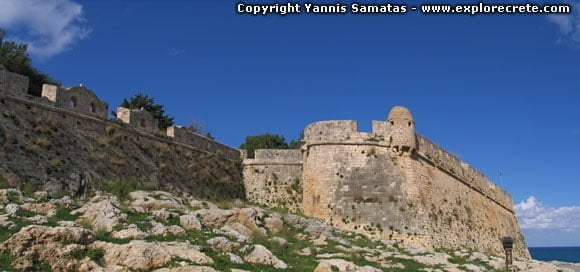
At the turn of the 20th century almost the whole of the interior of the Fortezza was full of residential buildings. Immediately after the Second World War, however, the inhabitants of the Fortezza began to move out to other parts of Rethymnon.
This extension of the town led to the almost complete disappearance of the landward walls and the small ditch surrounding them. Inside the Fortezza itself, all the ruined buildings – mostly houses – were demolished, destroying any remaining traces of the Turkish period.
The constant and varied use of the Fortezza over the centuries altered its original form both internally and externally. It took about twenty years to repair the damage to the fortress and remove the brothels of Rethymnon established there. It is worth noting that for a long time the Fortezza even housed the local prison.
Today the outer fortifications of the Fortezza are preserved intact and some buildings are still being restored, allowing visitors to gain a good impression of life in the Fortezza in Venetian times.
A Tour of the Fortezza
You can reach the Fortezza either through the alleys of Rethymnon old town, or, more easily, by following the coast road that starts from behind the old Venetian harbour. Follow the coast road, passing tavernas and cafes, for about 200-300 yards until you reach the small car park on your left, at the foot of the steps leading up to the fortress. You can’t miss the Fortezza looming right above you.
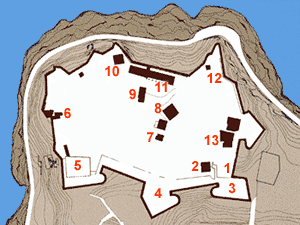
- East Gate (Entrance)
- Artillery Magazine
- Santa Maria Bastion
- Erofili Theatre
- Sant’ Elia Bastion
- San Lucca Bastion
- West Gate of Fortezza
- Church of Agia Ekaterini
- Mosque
- Rector’s Residence
- Councillors’ Residence
- Fortezza Storerooms
- Gunpowder Magazine
- Church of Agios Theodoros
- Fortezza Exit (No 1).
Visit the Virtual tour of Fortezza
* The article “Fortezza of Rethymnon ” has been written by Maria Kivernitaki and Yannis Samatas
- Back to Crete History & Archaeology
© explorecrete.com All Rights Reserved. Reproduction or copying without permission is prohibited.

